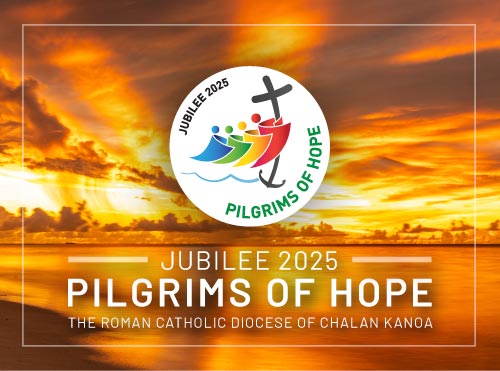by Msgr. Charles Pope
Catholic teaching says that we must balance between the duty of a nation to welcome immigrants, and the duty of immigrants to obey a nation’s laws.
What’s in a wall? A lot of meaning to be sure, as the raging debate in the U.S. shows. I’ve been asked if there is a Catholic position on the building of a wall along our southern border. There is no Church teaching on such a matter, and I don’t think that there should be.
Walls speak to many different things. Our homes have walls and doors. Every ancient city had walls. The Vatican has walls. Gosh, even Heaven has walls and gates—and a very strict immigration policy! (See Revelation 21:12, Luke 13:25) In this sense walls are protective, keeping those within secure, providing privacy, and preventing the entry of harmful forces.
On the other hand, many of us remember the Berlin Wall and the horror it represented. It was akin to a large prison wall, keeping people who desired freedom from escaping to a better world. There was great joy around the globe when it finally came down in 1989.
Perspective and experience also affect one’s opinion on walls. In Israel, walls were erected dividing Jewish and Palestinian areas. Most citizens of Israel approve and point to a reduction in bombings and other violence. Those from Gaza and Bethlehem, however, are more likely to cite the crushing poverty brought about by economic isolation.
Fences, too, provoke widely different reactions. One adage says, “Good fences make good neighbors,” but another is the cautionary “Don’t fence me in.” The first saying speaks to the peace that comes from agreed-upon and respected boundaries, while the other bemoans unnecessary restrictions on advancement.
Scripture speaks differently about walls, depending on the context: We read, A strong city have we, God sets up walls and ramparts to protect us (Isaiah 26:1), but also For He Himself is our peace, who has made the two one and has torn down the dividing wall of hostility (Ephesians 2:14). Walls are not intrinsically evil, nor are they always good. The context matters.
In the current debate about “the wall,” I think that the Church should limit herself to speaking to her basic principles on immigrants and immigration. The Catechism of the Catholic Church (2241) lays out two principles, which are meant to balance each other:
The more prosperous nations are obliged, to the extent they are able, to welcome the foreigner in search of the security and the means of livelihood which he cannot find in his country of origin. Public authorities should see to it that the natural right is respected that places a guest under the protection of those who receive him.
Political authorities, for the sake of the common good for which they are responsible, may make the exercise of the right to immigrate subject to various juridical conditions, especially with regard to the immigrants’ duties toward their country of adoption. Immigrants are obliged to respect with gratitude the material and spiritual heritage of the country that receives them, to obey its laws and to assist in carrying civic burdens.
So, the Catholic view is that a prosperous nation such as ours should be generous in receiving immigrants, especially refugees and the poor, but that there are legitimate limits the nation can apply. In particular, the receiving nation has a right to expect things of immigrants: that they follow its laws, respect the country’s way of life, and contribute to the shouldering of civic responsibilities. (A nation also has the right and duty to defend and promote the common good of its citizens — see CCC 1910.)
I am personally very upbeat about immigrants in this country, most of whom come from Central and South America. I have found them to be hardworking, skilled (especially in the building trades) and largely Catholic with strong family ties. I think that they are a blessing to our nation and that we should admit a large number of them annually.
I also understand, though, that our borders cannot simply stand open. There are legitimate concerns for security at the borders and immigration must be well-managed in order to promote the safety and general welfare of all: Americans and immigrants.
Perhaps it is good to conclude with a couple of snapshots from history:
In 1969, Cesar Chavez, the founder of the United Farm Workers (UFW), marched with UFW members through the Imperial and Coachella valleys to the border of Mexico to protest growers’ use of illegal immigrants as strikebreakers. He was joined by Rev. Ralph Abernathy, a black Civil Rights leader, and Sen. Walter Mondale. They argued that the U.S. government should do more to enforce laws against illegal immigration. They also organized efforts to report strikebreaking replacement workers to the Immigration and Naturalization Service (INS). They claimed that illegal immigration drove down wages and hindered the ability of the UFW to unionize workers [*]. So, in those years many liberals opposed illegal immigration.
By the 1980s, however, conservatives were more opposed to illegal immigration than were liberals. Yet in those very years, President Ronald Reagan surprised most conservatives by being quite optimistic about immigration (legal). He noted that a growing population would bring about a growing economy. He was also criticized by many Republicans for granting amnesty (subject to conditions) to millions of illegal immigrants in 1986.
As these snapshots show, the political lines have shifted around over time. This is all the more reason for Catholics to hold to our own more stable and balanced teaching, which respects two traditions or pillars: generosity to immigrants and an orderly process that promotes the security and common good of a nation’s citizens. Many today, leaders and those among the general citizenry, want to hold fast to one principle while rejecting the other. Catholic teaching says that we must balance between the two.
Do you want the wall to be built? Fine, but be sure that your support is based on national security and the common good of our citizens rather than a rejection of the generosity required of a prosperous nation such as ours.
Do you oppose the building of the wall? Fine, but be sure that you can articulate the conditions on the right to immigrate so that “the common good” is protected. Be certain that your plan ensures that immigrants fulfill their “duties toward their country of adoption” (“respect[ing] with gratitude the material and spiritual heritage of the country that receives them, … obey[ing] its laws, and … assist[ing]in carrying civic burdens”).






